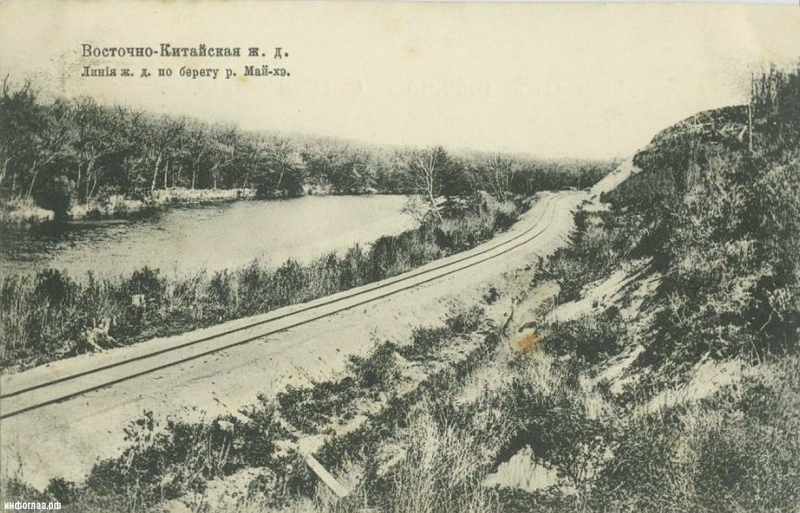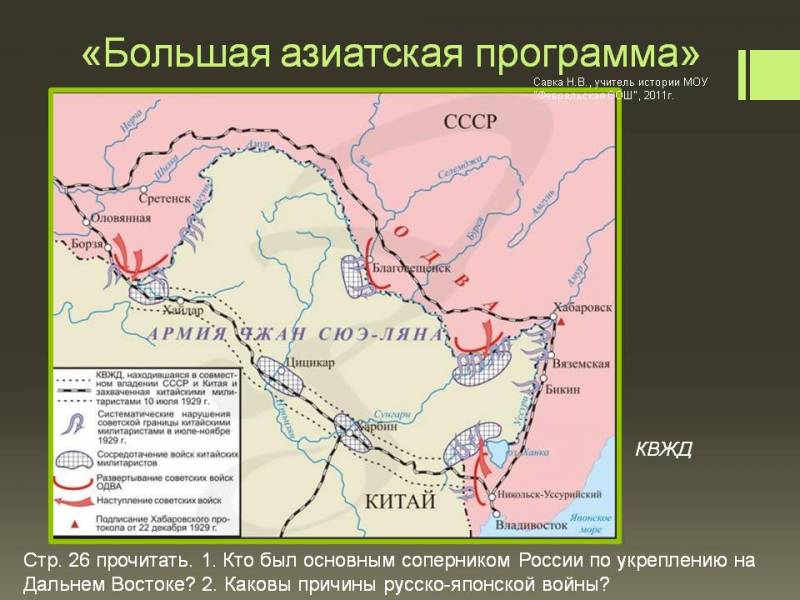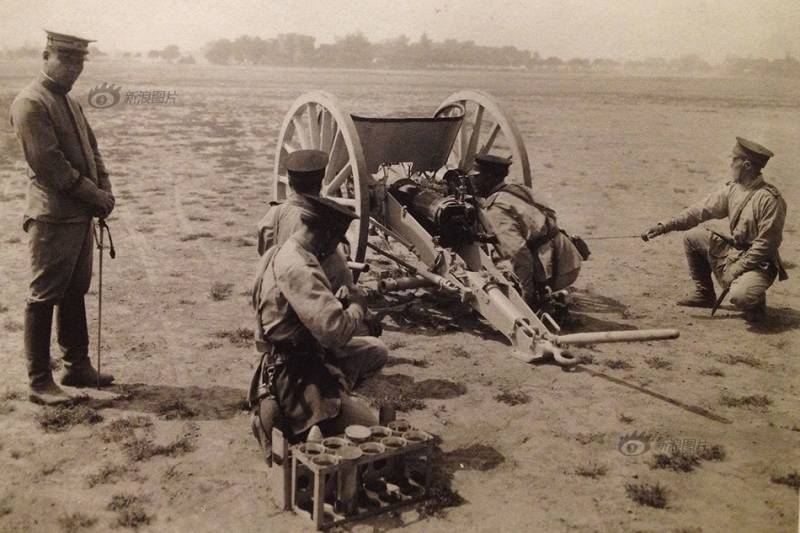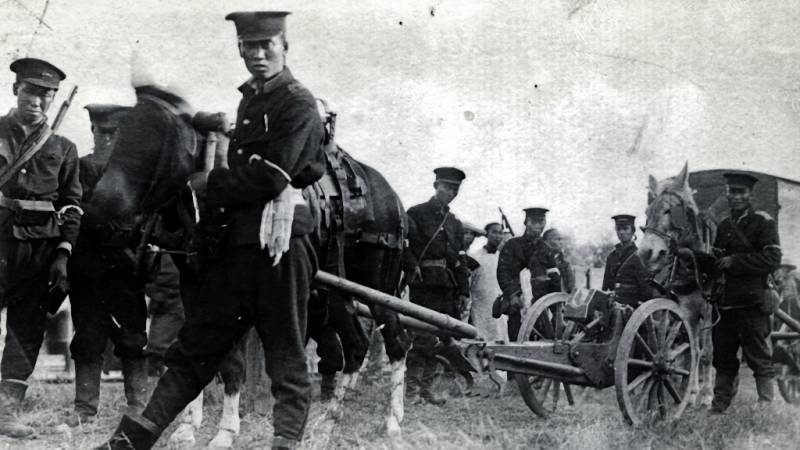Conflict on the CER: end of concession
The CER itself was conceived as a large-scale project that forms the infrastructure and marked the beginning of the internationalization of domestic business through the export of capital. The construction and operation of the Chinese Eastern Railway (CER) was one of the most instructive examples of public-private partnerships at the international level.
The concession of the CER was conceived in 80 years to not only directly connect Chita with Vladivostok, but also to help Russian expansion in Northeast China. Wars and revolutions markedly reduced its effectiveness, which led to the sale of the CER to the Manzhou-Guo state in just 32 a year after the start of operation. But in August, 1945-th road completely paid for itself, ensuring the uninterrupted supply of the Red Army, smashing the samurai in Manchuria.
The construction of the CER is inextricably linked to history Structures of the Trans-Siberian Railway, which began to be built in 1891 year. Three years later, it turned out that it would be economically feasible to straighten the Far Eastern section of the road by laying a route through Manchuria. The main inspirer of the project S.Yu. Witte regarded it as a springboard for Russian expansion in China, which in its confrontation with Japan favorably perceived the strengthening of relations with Russia. At the end of 1895, on the initiative of S.Yu. Witte was organized by the Russian-Chinese Bank. China agreed to hold the railway through Manchuria to Vladivostok (and it was the Chinese who gave the name of the CER), and Russia received the coveted concession. But a number of foreign researchers believe that China, for which Manchuria was a periphery, hoped to settle there itself, relying on Russian infrastructure investments.
In May, 1896 was concluded in Moscow a secret agreement on the Russian-Chinese military alliance and the construction of the CER (the document was fully published only in 20-s). According to this agreement, the right to build and use the CER was not received directly by the tsarist government, but by the Russian-Chinese bank. This bank was under strict Russian state control, had capital in 6 million gold rubles, and 5 / 8 from these funds came from four French banks. The cost of building the road was almost two orders of magnitude more than the bank’s capital, and a significant part of the funding was raised through the issuance of securities. The first issue of bonds with a volume of 15 million rubles in 1897 was distributed by the Russian-Chinese Bank itself, subsequent issues by the Russian government.
At the end of the summer of 1896, a contract was signed in Berlin for the construction and operation of the CER (published only in 1916). The contract provided for the creation by the Russian-Chinese Bank of a special joint-stock company of the Chinese Eastern Railway. The capital of the Company was five million gold rubles (five thousand shares at the price of one thousand rubles). The chairman of the board of the CER Society was appointed by the Chinese government, and received maintenance from the Society. The road manager was appointed by the Russian government. From a financial point of view, it is the Russian government that is committed to guaranteeing the CER company to cover all the costs of operating the highway and servicing payments on bonds. The state lands necessary for the construction, operation and protection of the main line were transferred to the Chinese-Eastern Railway Society free of charge, and private lands were redeemed to them.
The CER company received a number of significant customs and tax benefits. After the construction was completed, the CER Society provided a lucrative loan to the Chinese government. At the same time, the Chinese government had the right to redeem the CER ahead of schedule through 36 years after its opening, but on conditions of full reimbursement of all construction costs, as well as repayment of all debts of the CER Company with interest. Otherwise, China received the road without compensation at the end of the term of the concession (that is, taking into account the launch of the road - 1 July 1983 of the year).
Construction of the road began immediately from two sides - from Vladivostok and Chita. In 1898, Russia received the right from China to extend the terms of the concession also to the construction of the southern branch of the CER that goes to Port Arthur, which was rented along with the site for the construction of the Dalniy port for 25 years. After the defeat in the Russian-Japanese war 1904-1905. this section went to the Japanese under the name of the South Manchurian Railway.
Survey work on the future railway line was carried out in record time, and as early as 1898, builders began excavation work (in the southern section, in 1899). At the same time, the city of Harbin was laid, which later became the economic center of all of Northeast China. Since 1898, the Dalniy commercial port (at present, the city of Dalian) has also been built by the efforts of the Chinese-Eastern Railway Society. At the same time, 30 million gold rubles were spent on its construction in seven years.
By the summer of the 1900, about 1,4 thousands of km of tracks (57%) were laid on the CER, including the southern branch, movement began in some sections. However, the Ihetuan (Boxing) Uprising broke out in China, and for the first time the XVUMX on June 23 was attacked by the CER. As a result, a significant part of the railway, infrastructure facilities and station buildings were destroyed. After the uprising, only 1900 km of tracks remained intact, and the losses amounted to 430 million rubles, but later the Chinese government reimbursed them to the CER Society. The railroad was rebuilt and completed in an accelerated mode, and in June 71 of the year it was ready - 1903 stations and 92 tunnels were built, although, as is usually the case in Russia, some additions were made during the mainline operation, including the period of the Russian-Japanese war . But even then, 9 new patrols (146 km of track) were laid for operational troop transfer.
The positions of Japan strengthened and the uncertain status of the CER made itself felt as soon as Russia's relations with China deteriorated. Already in 1906, the Chinese questioned the conditions of a concession formally signed with a private Russian-Chinese bank. Russian diplomats had to defend all the conditions of the concession on the CER, since it was the only legal basis for the stay of Russian troops in Manchuria. At the same time, the refusal of the status of a state-owned enterprise ensured a more favorable attitude of the Chinese towards the Russian presence in the CER area.
In anticipation of the storm
The Russian-Japanese war did not allow the CER to concentrate on commercial shipments. Even after its termination the highway served military needs. Only with 1907, regular transportation of private goods and passengers was resumed on the CER.
In 1905, the southern branch of the CER and the access to the Yellow Sea were lost. Plans for the active use of the Trans-Siberian Railway for the transit of goods from Europe to Asia have been threatened. Cargo delivery by rail from Vladivostok to Hamburg or Liverpool was several times more expensive than transportation by sea. As a result, more ¾ traffic on the CER in peaceful 1907-1913. they were not connected with transit (tea, etc.), but by internal transportation and export of timber, coal and grain cargoes. Accelerated construction of the Amur railway - the Transsib section on the territory of Russia, also did not contribute to the prosperity of the CER.
From a financial point of view, the loss of the southern branch of the CER and the port of Dalniy led to large losses. With the consent of the Russian Minister of Finance, part of the bond capital and loans falling proportionally on the southern branch, as well as capital for the construction of the port and the city of Dalny and for the organization and operation of the shipping company of the Company were withdrawn from the Company's accounts. Bond loans attributed to these enterprises (5, 6, 8, 9 and 10) were canceled.
The short period of peaceful life of the CER did not have a large economic effect, although the traffic grew rather quickly. With the beginning of the World War, the highway again switched to military goods. The total freight turnover in 1914 was slightly reduced - to 1,1 million tons. Some economic revival in the Society of the Chinese Eastern Railway caused the transfer of the Ussurian railway located on the territory of Russia to it, which naturally caused controversy in the State Duma, since the state-owned enterprise was handed over to a formally private foreign road.
The development of the economic potential of Northeast China has increased the demand for the services of the CER and, consequently, its income. Already by 1910, the road did not have a shortage in operation, and in 1915-1917. The CER did not even need additional payments for the functioning of the Russian government. The financial problems of the CER Society were caused not so much by the activity of the road itself, but rather by participation in financing various projects for the development of Manchuria. As is customary, alas, in Russia, it was not done without inefficient, inappropriate use of funds. In addition, in the actual management of the CER, the Russian military administration always played a special role before the 1917 revolution.
An analysis of the economic role of the CER should not be limited only to an assessment of the activity of the main line itself (the length of the main branch was 1726 km plus access roads and forest branches), which indeed has been unprofitable for most of the years. Indeed, even the CER Society was not limited to the railway: it owned workshops in Harbin, a shipping company flotilla, power plants, Zhalaynor coal mines. The company received the right to explore and develop coal deposits at a distance of approximately 17,3 km (30 li) on both sides of the railway, but it was necessary to buy or rent land for coal mining. As for shipping, before the Russo-Japanese War, the CER Society was engaged in shipping by 20 ships, and after the loss of Dalniy, it owned only the river fleet on the Sungari.
On the other hand, thanks to the CER in Russian North-East China, Russian trade has sharply increased, and Russian entrepreneurs have implemented a number of investment projects. In addition, in Harbin, social infrastructure was developing rapidly, as they would now say. In general, by the end of 1914, Russian private investments in the region reached almost 91 million rubles, but this was only 15% of Russian direct investments in Manchuria - the rest was taken by the CER itself.
Sell in a Soviet way
Civil war and intervention have not bypassed the CER, and its turnover in the 1918 year has decreased compared to the 1917 year in 170 times! Under the pretext of fighting against the communist influence of 27 in December 1917, the Chinese government banned the export of food, including tea, to Russia, and in January, 1918 closed the border altogether. At the same time, the white emigration gave a new significant impetus to the economic development of Harbin and the area around the highway.
By a decree of 17 (4) of December 1917, the Council of People's Commissars unilaterally changed the terms of the 1896 contract of the year and nationalized the Russian-Asian Bank, transferring its functions to the National (State) Bank. In February 1918, the former board of the Society of the Chinese-Eastern Railway in Petrograd was dissolved. Nominally, the CER transferred to the competence of the People's Commissariat of Railways of the RSFSR, although for several years the actual control over the main line did not belong to the new Soviet power.
When the Soviet Union and China established diplomatic relations in 1924, the USSR abandoned a number of “special rights and privileges in Manchuria. This led to the elimination of Russian concessions in Harbin and a number of other Chinese cities, however, the CER remained under the control and service of the Soviet side. In 1925-1927 Soviet-Chinese trade came to life, and, as a result, the volume of freight traffic on the Chinese-Eastern Railway began to grow.
True, then a new aggravation of relations between the two countries began, and the role of provocateurs had to be played by detachments formed from former White Guards who had settled in Harbin. In July, 1929, with their support, the Chinese attempted to alienate the road. The raid on the board of the CEL in Harbin and its institutions along the entire line of the road to the station Pogranichnaya was accompanied by the arrest of Soviet employees and the rupture of diplomatic relations. At the same time, the authorities of Mukden and Nanking refused from a peaceful settlement of the issue, which in August led to the rupture of diplomatic relations between the USSR and Kuomintang China. The Mukden troops and the Russian White Guards began military operations against the Soviet troops in the Amur and Transbaikalia, but units of the Special Far Eastern Army, entering the territory of Dongbei, unexpectedly quickly defeated them.
The outcome of the conflict was summed 22 December 1929, in Khabarovsk - the Chinese were forced to sign a protocol to restore the status quo of the CER. The Chinese authorities even pledged to disarm the White Guards, sending their commanders out of Dongbei. The USSR responded immediately with the withdrawal of troops from the north-east of China. These events and received in the historical literature the name "Conflict on the CER".
But already in 1931, Japan began the seizure of Manchuria, and it became clear that the fate of Soviet participation in the CER concession was predetermined. After many months of negotiations, which began in June 1933 of the year and were accompanied by hard trade at a price when there were several series of counter offers, the USSR and the puppet state of Manzhou-Guo agreed to sell the CER for 140 million yen. The USSR agreed to receive two-thirds of the sum with Japanese goods for two years, another part - in cash upon the conclusion of an agreement, and something - even Manzhou-Guo Treasury obligations guaranteed by the Japanese government (with an annual yield of 4%).
In August, 1945, after the defeat of the Kwantung Army in Manchuria, the CER returned to Soviet control. Already on August 14, the Soviet-Chinese agreement on the China Changchun Railway was signed (the CER and the southern branch to Port Arthur, which returned to its subordination, was named). This document established a joint company on a parity basis for operating the road solely for commercial purposes with the subsequent transfer of the entire road to China free of charge in the 1975 year. But at the height of Stalin’s friendship with Mao Zedong, the road was finally transferred to the PRC much earlier, at the beginning of the 1950s.




Information